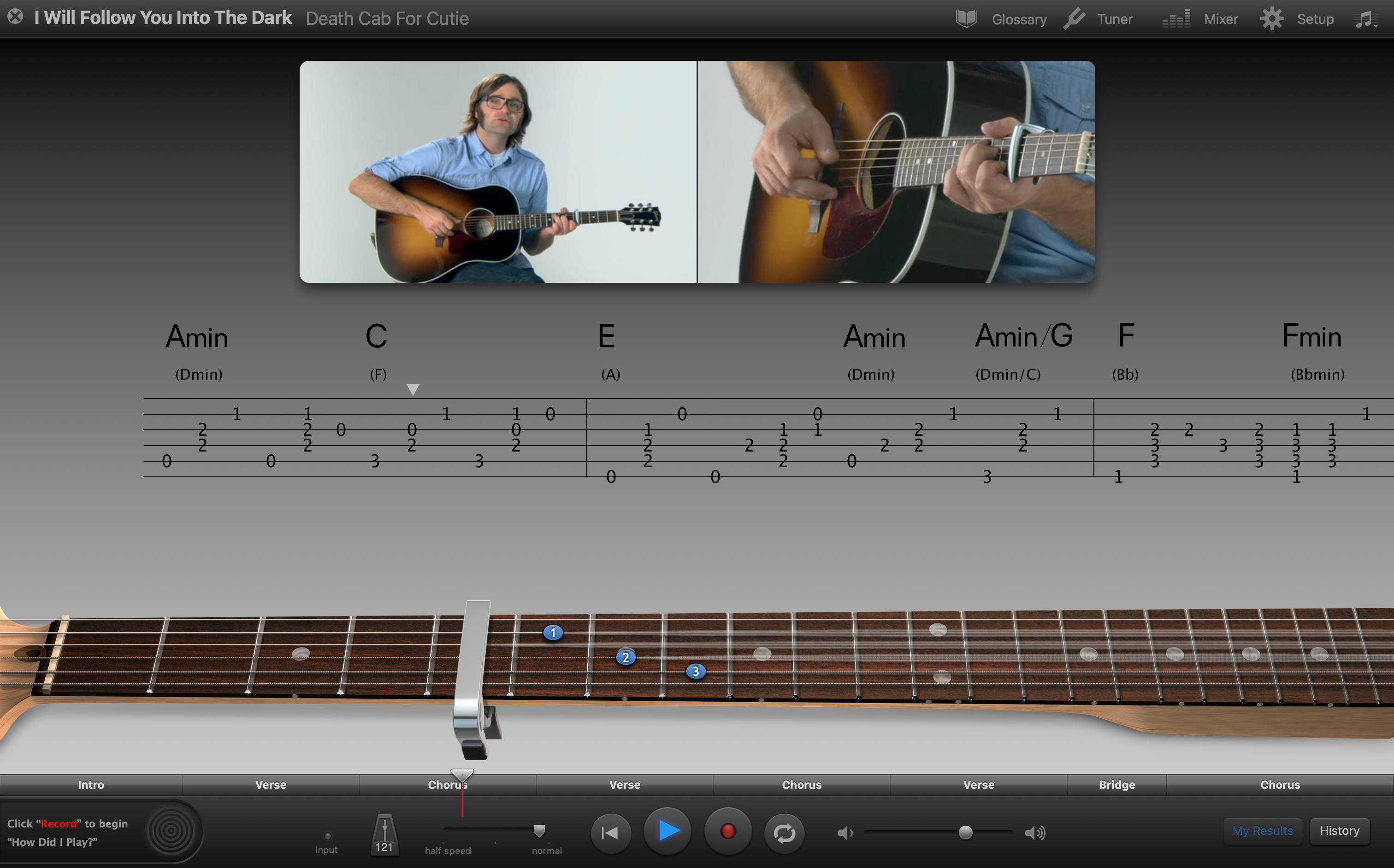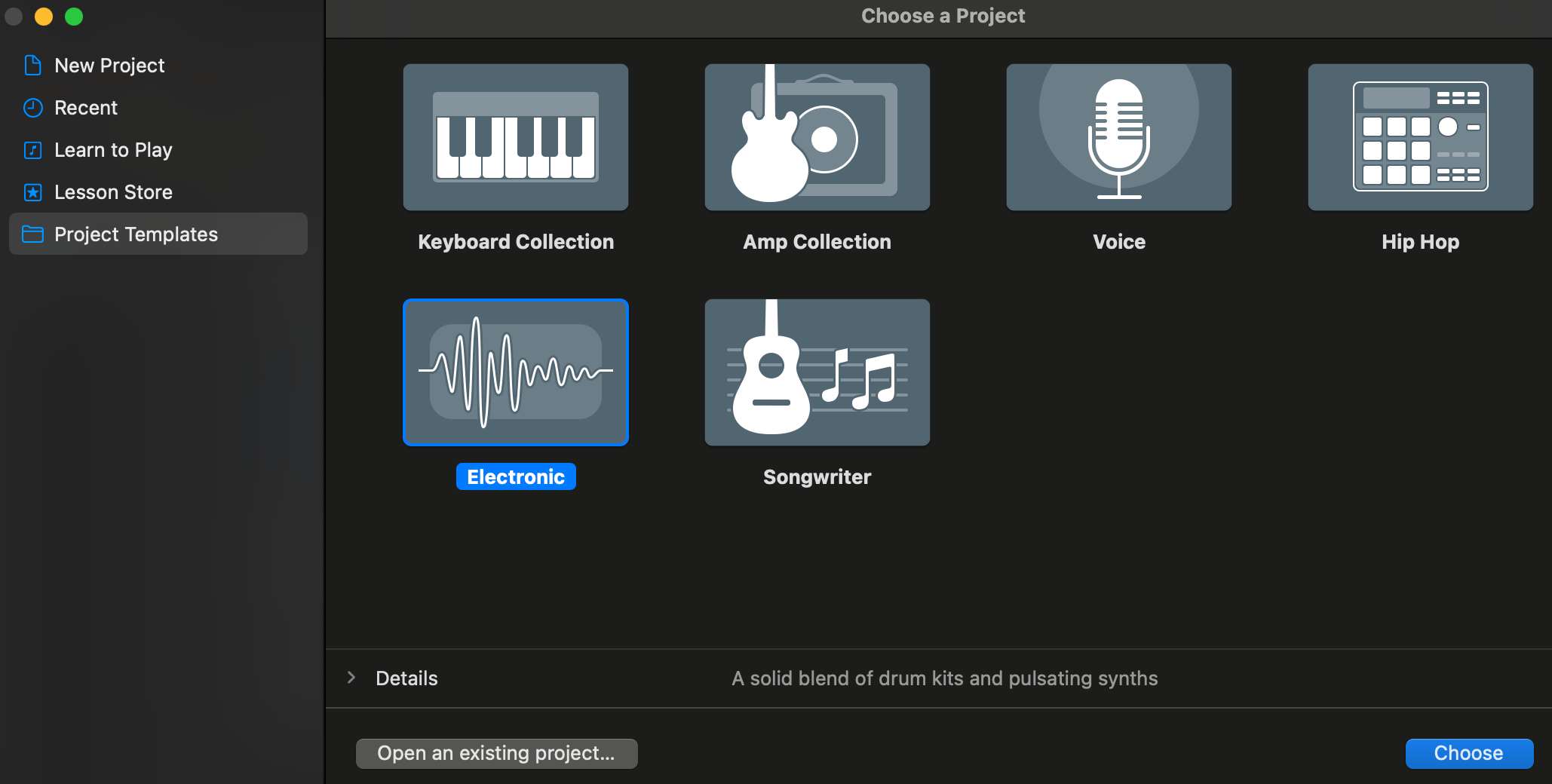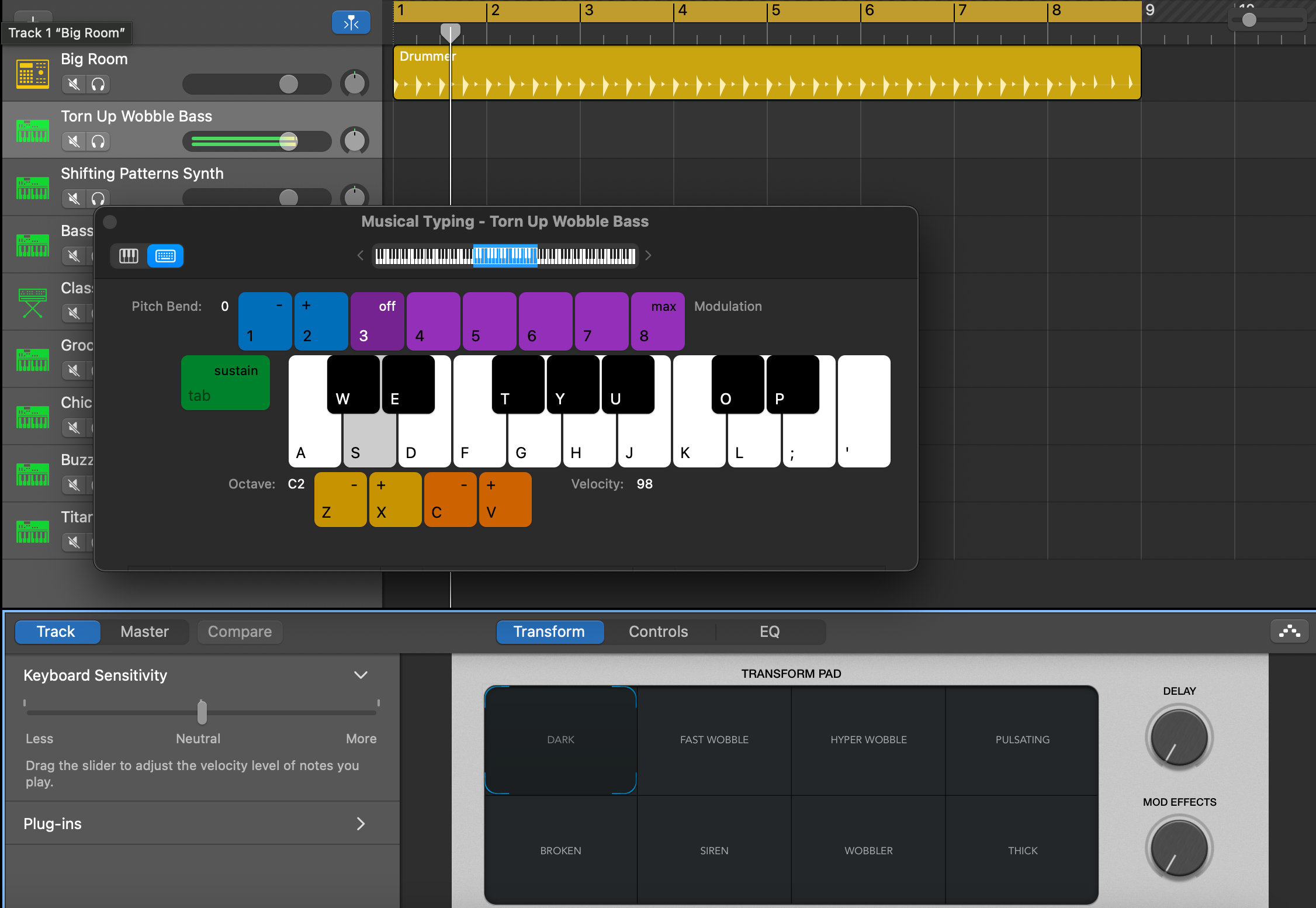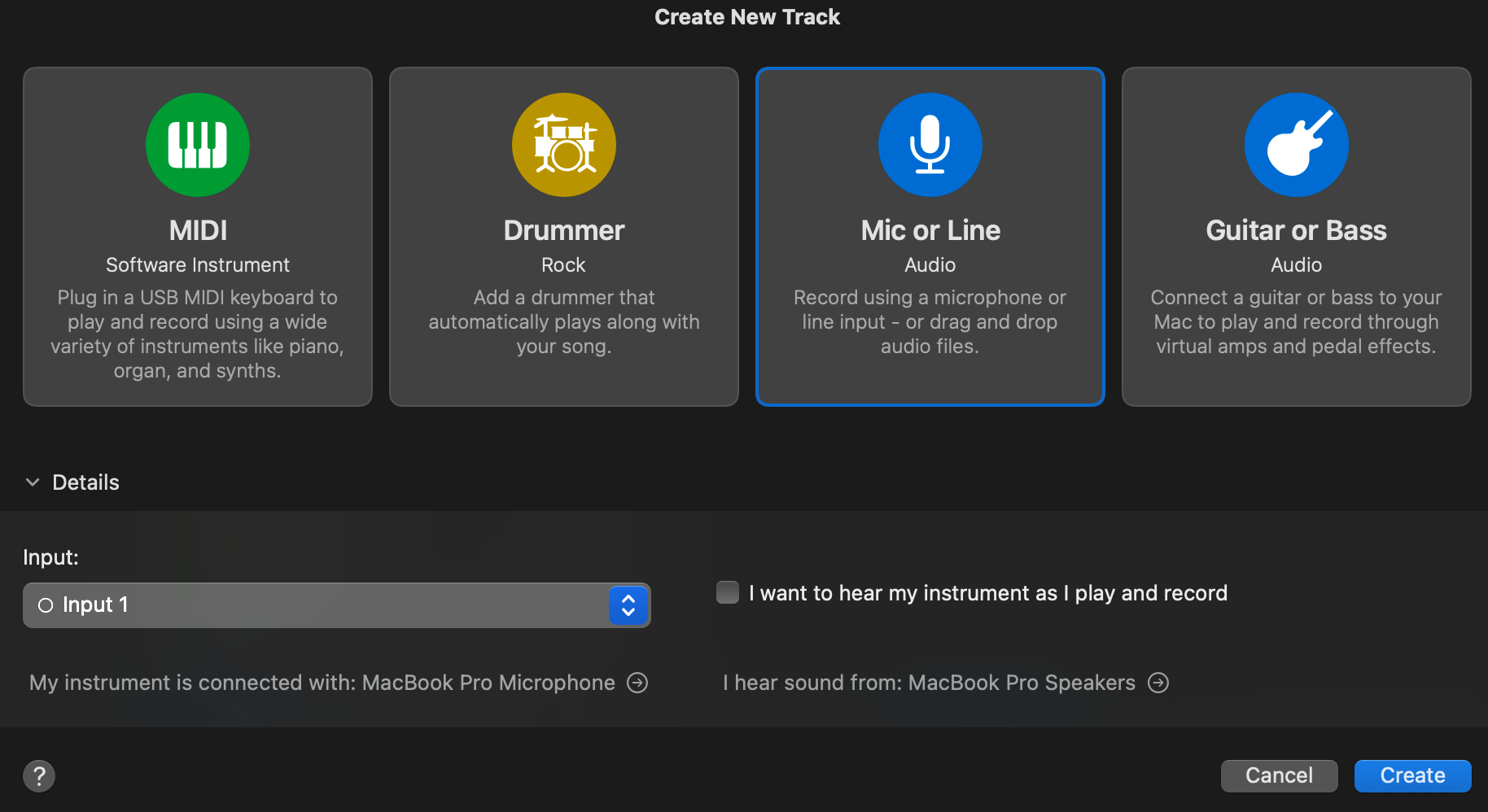Key Takeaways
- GarageBand offers interactive lessons, project templates, and virtual instruments for beginners to create music easily.
- The software simplifies recording real instruments, editing, mixing, and sharing tracks for a polished result.
- As skills progress, GarageBand provides advanced features like automation and MIDI editing in a clutter-free interface.
GarageBand turns your Mac into a user-friendly recording studio, offering everything you need to create music with no experience necessary. While professional music software is best left in the hands of pros, this free alternative from Apple is an inviting entry point that doesn’t sacrifice essential features.
Getting Started with GarageBand
The moment you open GarageBand, you’ll notice a simple interface that’s more reminiscent of iWork than a digital audio workstation (DAW). Along with simply getting started on a new song, GarageBand offers interactive lessons for the guitar and piano.
These built-in lessons feature real artists who guide you through basic concepts and techniques while teaching you how to play a song. GarageBand reflects the notes they play by, for example, showing tabs on a virtual guitar fretboard. The software can also listen and provide feedback while you play the song on your own instrument.
Remember that GarageBand is aimed at all levels of ablity, from experienced songwriters who want a simple interface to complete newcomers who are seeking a free and easy tool with which to experiment.
Building Your First Track
When making a new song, you’re not forced to take the “blank canvas” route, as GarageBand provides project templates tailored to different genres. Whether you want to use a pre-configured guitar setup, create some electronic dance music, or record your voice for a podcast, there’s a template designed to get you started quickly.
Also, don’t feel confined by the presets loaded up by these templates. You can easily add or remove tracks, change instruments, and make other modifications to match your creative vision.
The best way to learn what GarageBand is capable of is to explore the interface yourself, at your own pace. You can also enable a floating help window under Help > Quick Help so that as you navigate the app, you’ll get an explanation of the various features.
GarageBand’s virtual instruments are where the magic really happens. You can play everything from grand pianos to synthesizers using your computer keyboard or a MIDI controller. The software’s intelligent scaling means that even if you don’t know music theory, you can’t play a wrong note—every key is mapped to the correct scale.
The Virtual Drummer feature deserves special attention. Instead of programming complex drum patterns, you can simply choose a drummer’s style and adjust their performance using intuitive controls. Want more cymbal crashes? Need a simpler beat? Just drag a few sliders, and your virtual drummer adapts accordingly.
This is also great for just playing along with your own instrument, offering an easy way to jam and experiment.
Recording Real Instruments in GarageBand
When you’re ready to incorporate real instruments, GarageBand makes the process straightforward. Connect your guitar or microphone through a USB interface, and you’ll have access to a vast collection of virtual amps and effects. You can transform a basic electric guitar into a roaring stadium sound or add professional-quality reverb to your vocals.
The software automatically detects your input source and helps you configure the right settings for recording. You can also enable monitoring to hear yourself through headphones while recording, complete with effects, making it feel like you’re in a professional studio.
You don’t even have to record to get some use out of GarageBand’s instrument inputs. Apple includes a range of virtual amplifiers that you can use to change how your guitar sounds, or apply effects to other instruments or your voice while auditioning or simply playing around with the software.
Polishing Your Sound by Editing and Mixing
GarageBand’s editing tools strike the perfect balance between power and simplicity. Basic tasks like cutting, copying, and moving sections of your recording are intuitive—just click and drag. The snap-to-grid feature helps keep everything perfectly in time, even if your timing wasn’t perfect during recording. You can even automatically loop sections using the loop tools, by dragging your recorded sample.
The mixing process is equally approachable. Each track has simple controls for volume and panning, plus basic effects like an equalizer and compression. While professionals will certainly crave more advanced tools, GarageBand provides everything a beginner needs to create a rough yet polished mix.
Collaborate and Showcase Your Music
Once your track is complete, GarageBand makes it easy to compile a music file of your single. You can export your song in various formats, from WAV files that preserve the highest quality of sound to MP3s that are perfect for streaming.
For collaboration, you can export individual tracks or the entire project file to work with other GarageBand users. You can even convert the project into a format compatible with the GarageBand app for iOS.
One of the best ways to use GarageBand is to start the music creation process on an iPhone or iPad, then move your project to the Mac in order to get greater control over your mix. This way you can get your ideas down in rough form, before later refining them in the more capable macOS version of the software.
Advanced Features to Grow Into
As you become more comfortable with music production, GarageBand offers more advanced features to explore. You can experiment with automation to create dynamic volume changes, try your hand at sampling to incorporate unique sounds, or dive into MIDI editing for precise control over your virtual instruments.
You also get access to Apple Loops, a royalty-free database of elements you can use within your mix. This includes anything from sound effects to drum loops.
These features are still accessible when you need them without cluttering the interface while you’re learning the basics. This thoughtful design means GarageBand can grow with you as your skills develop, potentially carrying you quite far before you need to consider more advanced software.
Other than its (lack of) price, GarageBand’s greatest strength is how it removes traditional barriers to music creation, providing a genuinely powerful platform for developing real skills. GarageBand offers everything you need to get started—and plenty of room to grow. Check out some of our other favorite free music making software, plus how to turn your iPad or smartphone into a sampler.
By the way, here’s the track I produced while writing this article!








